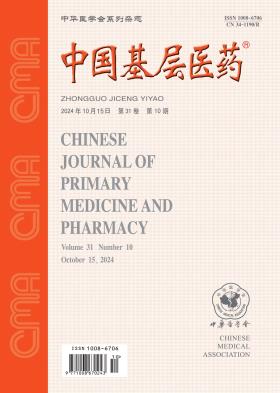Effect of implementation of VIP in obstetric ward on the quality of nursing management
引用次数: 0
Abstract
目的 分析产科病房开展贵宾式(VIP)护理模式对产妇分娩的影响和临床应用价值。 方法 选取义乌中心医院2017年1月至2018年12月住院分娩的产妇250例,根据护理方法不同分为对照组125例和观察组125例。对照组采取常规产科护理,观察组采取VIP产科护理模式,分析两组患者护理效果。 结果 观察组第一产程时间(321.13±28.91)min,第二产程时间(23.25±8.66)min,第三产程时间(6.12±1.02)min,总产程时间(259.18±36.03)min,均短于对照组,差异均有统计学意义(t=11.308、13.874、12.194、15.879,均P<0.05)。观察组产后出血量(171.43±19.06)mL,疼痛评分(1.78±1.01)分,住院时间(4.02±1.12)d,护理满意度评分(95.13±3.76)分,剖宫产率12.80%,与对照组比较差异均有统计学意义(t=14.438、12.398、14.392、15.093、χ2=4.013,均P<0.05)。观察组发生产褥期感染2例,宫颈裂伤1例,产后尿潴留4例,新生儿窒息0例;对照组发生产褥期感染11例,宫颈裂伤13例,产后尿潴留16例,新生儿窒息6例,两组差异均有统计学意义(χ2=3.478、3.917、4.018、4.881,均P<0.05)。 结论 产科病房开展VIP护理模式可以缩短产程和住院时间,减少产后出血量和围生期并发症,降低剖宫产率。产科病房实施VIP对护理管理质量的影响
Objective: To analyze the impact and clinical application value of implementing VIP nursing mode in obstetric wards on postpartum delivery. Method: 250 postpartum women who were hospitalized and delivered at Yiwu Central Hospital from January 2017 to December 2018 were selected. They were divided into a control group of 125 cases and an observation group of 125 cases based on different nursing methods. The control group received routine obstetric care, while the observation group received VIP obstetric care. The nursing effects of the two groups of patients were analyzed. The first stage of labor time (321.13 ± 28.91) minutes, second stage of labor time (23.25 ± 8.66) minutes, third stage of labor time (6.12 ± 1.02) minutes, and total stage of labor time (259.18 ± 36.03) minutes in the observation group were all shorter than those in the control group, and the differences were statistically significant (t=11.308, 13.874, 12.194, 15.879, all P<0.05). The postpartum bleeding volume of the observation group was (171.43 ± 19.06) mL, the pain score was (1.78 ± 1.01) points, the hospital stay was (4.02 ± 1.12) days, the nursing satisfaction score was (95.13 ± 3.76) points, and the cesarean section rate was 12.80%. There were statistically significant differences compared to the control group (t=14.438, 12.398, 14.392, 15.093) χ 2=4.013, all P<0.05). In the observation group, there were 2 cases of puerperal infection, 1 case of cervical laceration, 4 cases of postpartum urinary retention, and 0 case of neonatal asphyxia; There were 11 cases of puerperal infection, 13 cases of cervical laceration, 16 cases of postpartum urinary retention, and 6 cases of neonatal asphyxia in the control group. The difference between the two groups was statistically significant( χ 2=3.478, 3.917, 4.018, 4.881, all P<0.05). Conclusion: Implementing VIP nursing mode in obstetric wards can shorten the delivery process and hospitalization time, reduce postpartum hemorrhage and perinatal complications, and reduce the cesarean section rate.
本文章由计算机程序翻译,如有差异,请以英文原文为准。
求助全文
约1分钟内获得全文
求助全文
来源期刊
CiteScore
0.10
自引率
0.00%
发文量
32251
期刊介绍:
Since its inception, the journal "Chinese Primary Medicine" has adhered to the development strategy of "based in China, serving the grassroots, and facing the world" as its publishing concept, reporting a large amount of the latest medical information at home and abroad, prospering the academic field of primary medicine, and is praised by readers as a medical encyclopedia that updates knowledge. It is a core journal in China's medical and health field, and its influence index (CI) ranks Q2 in China's academic journals in 2022. It was included in the American Chemical Abstracts in 2008, the World Health Organization Western Pacific Regional Medical Index (WPRIM) in 2009, and the Japan Science and Technology Agency Database (JST) and Scopus Database in 2018, and was included in the Wanfang Data-China Digital Journal Group and the China Academic Journal Comprehensive Evaluation Database.

 求助内容:
求助内容: 应助结果提醒方式:
应助结果提醒方式:


